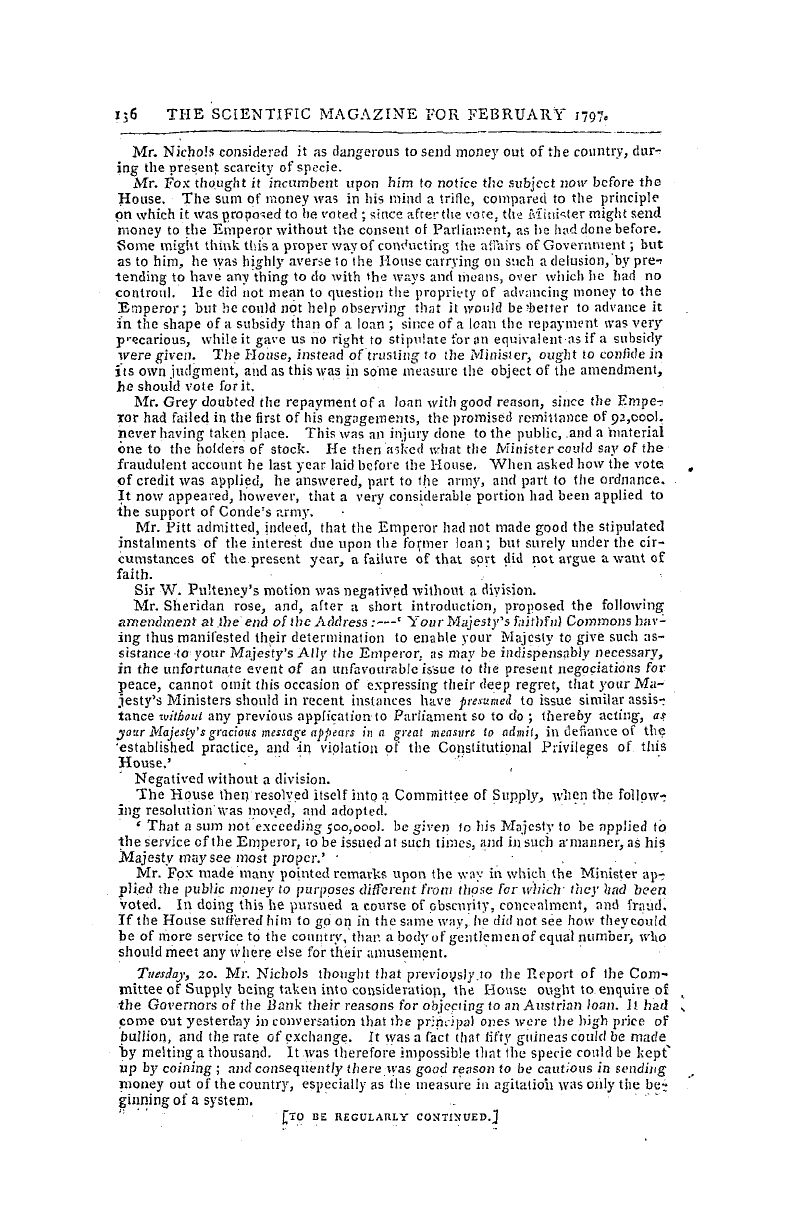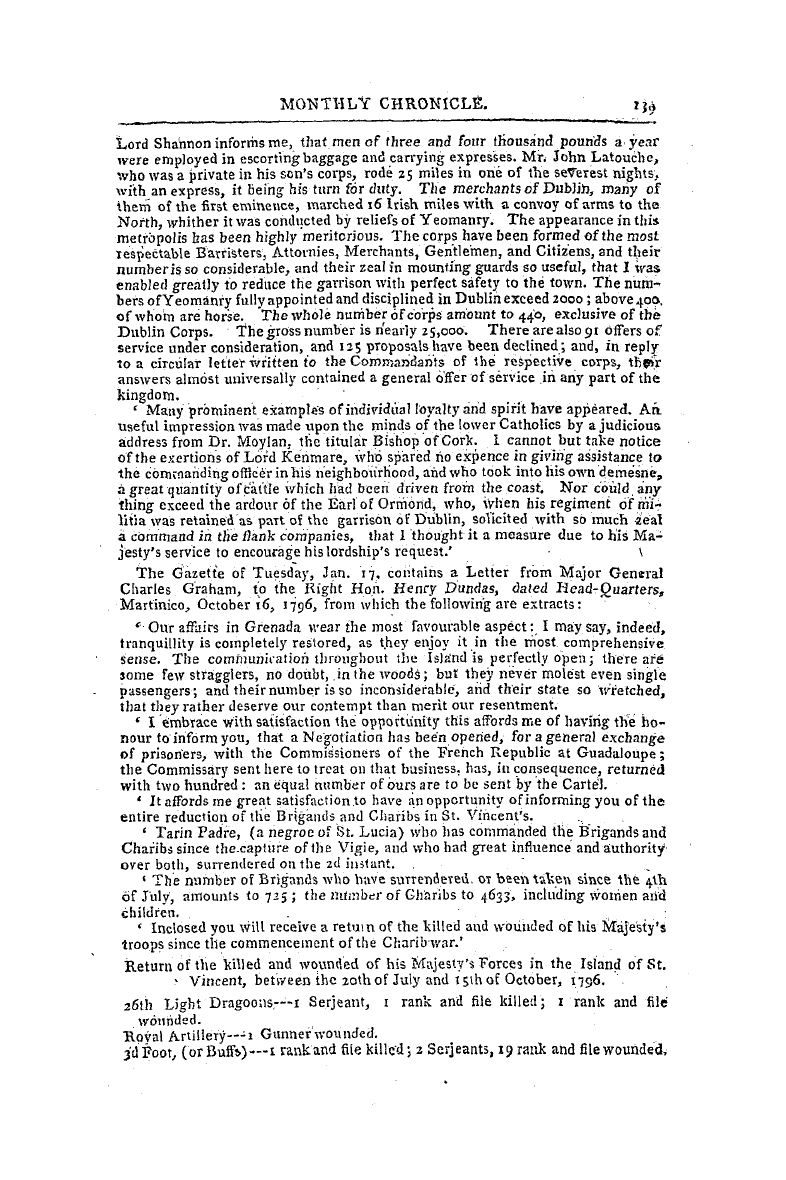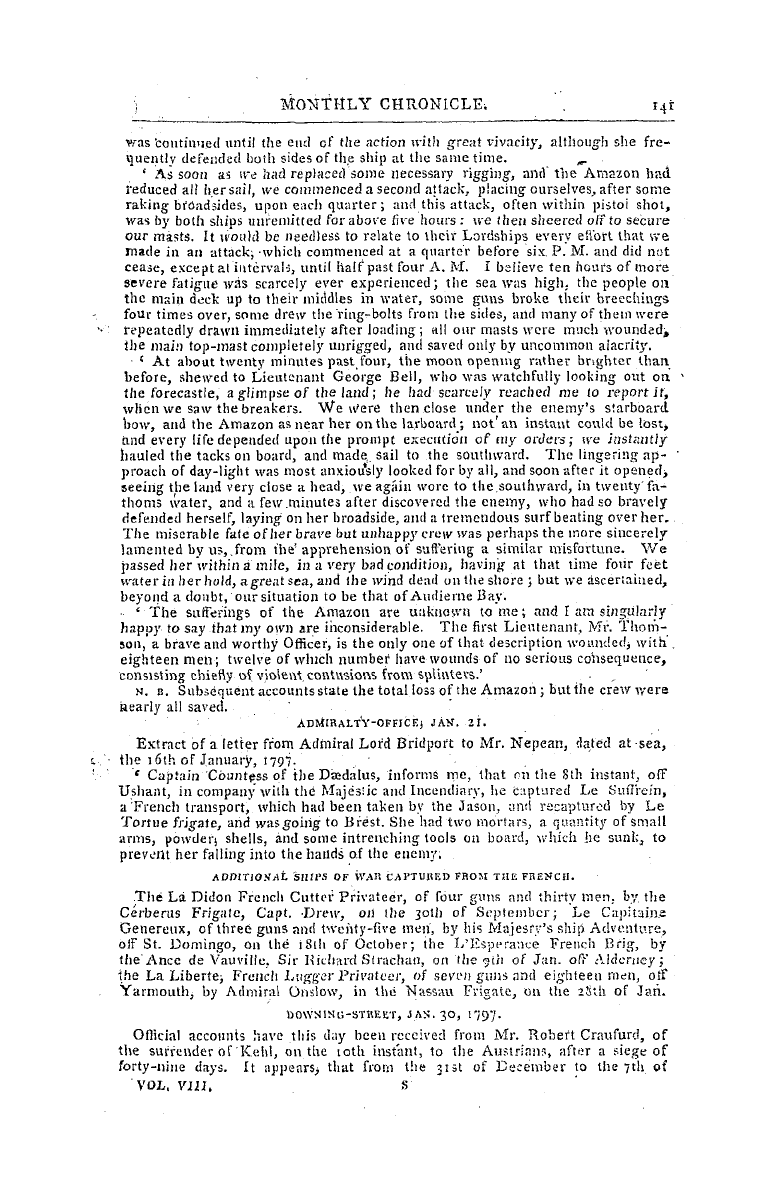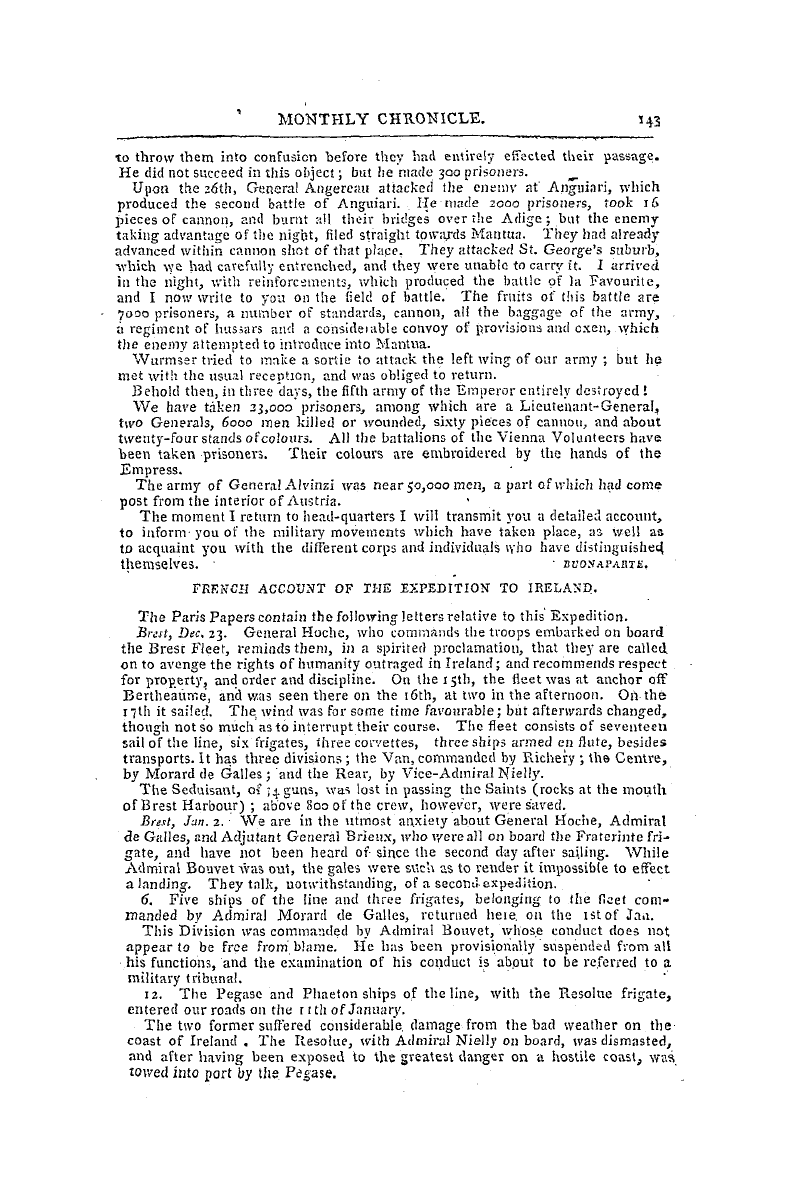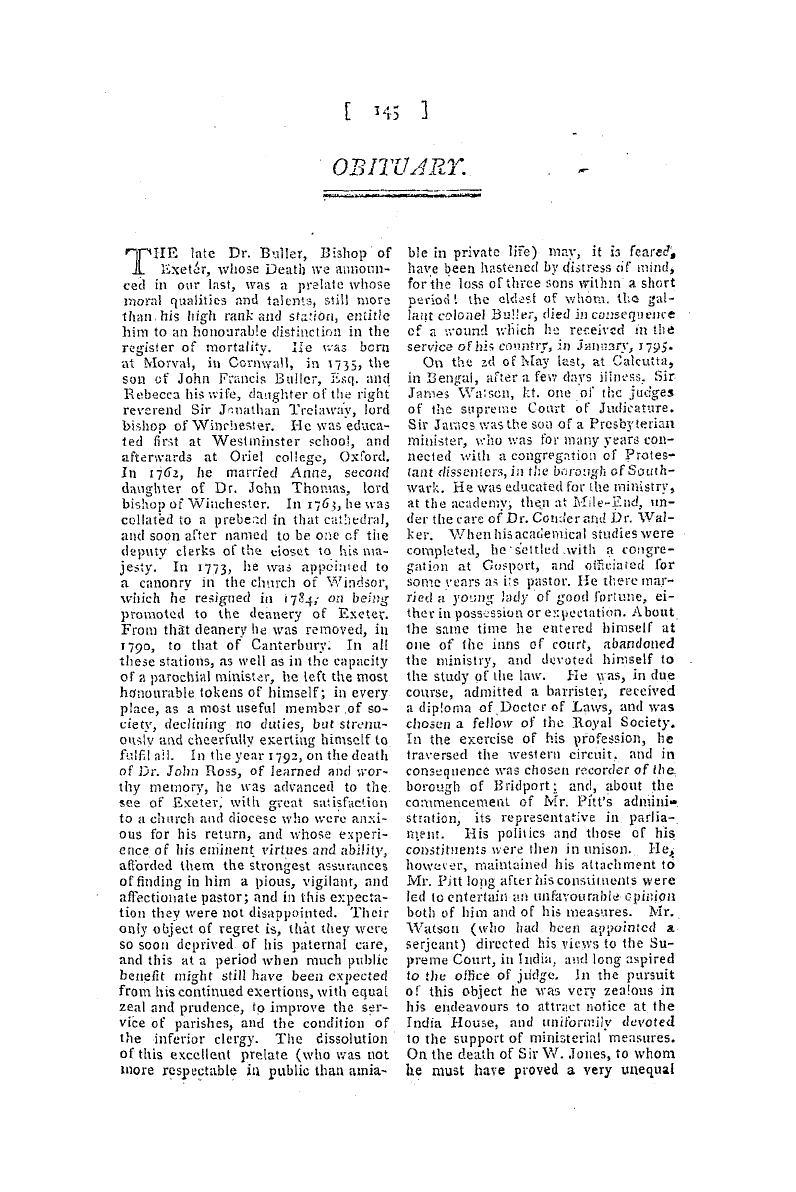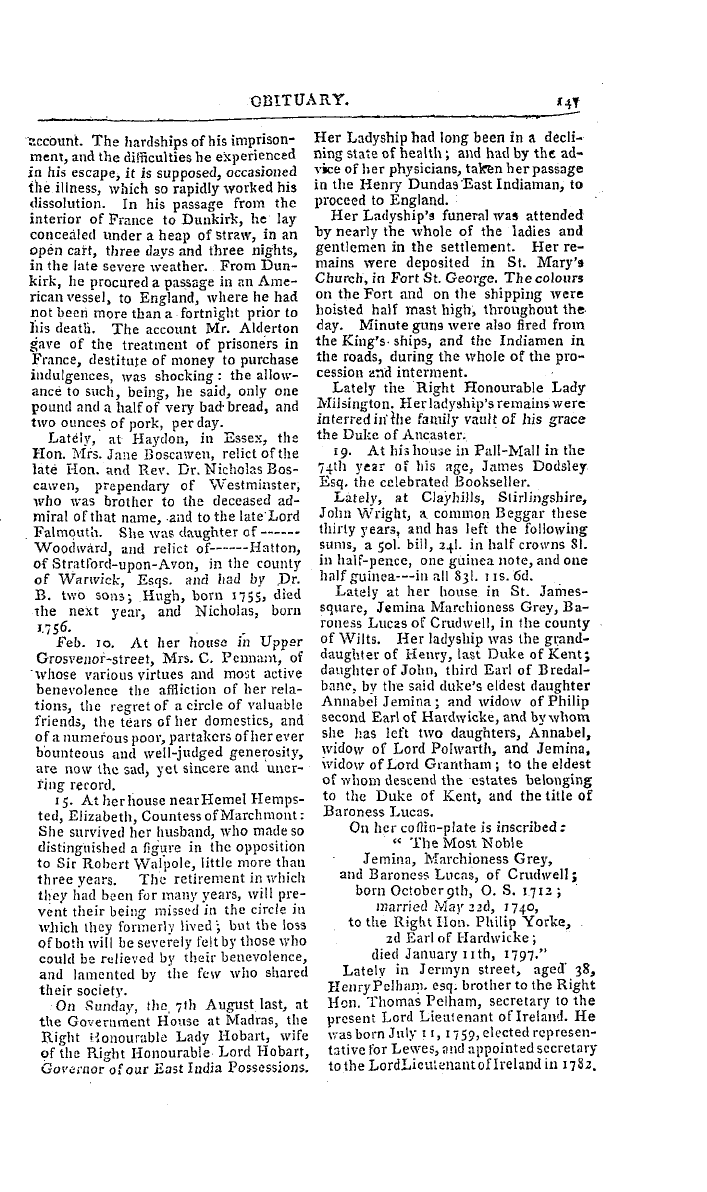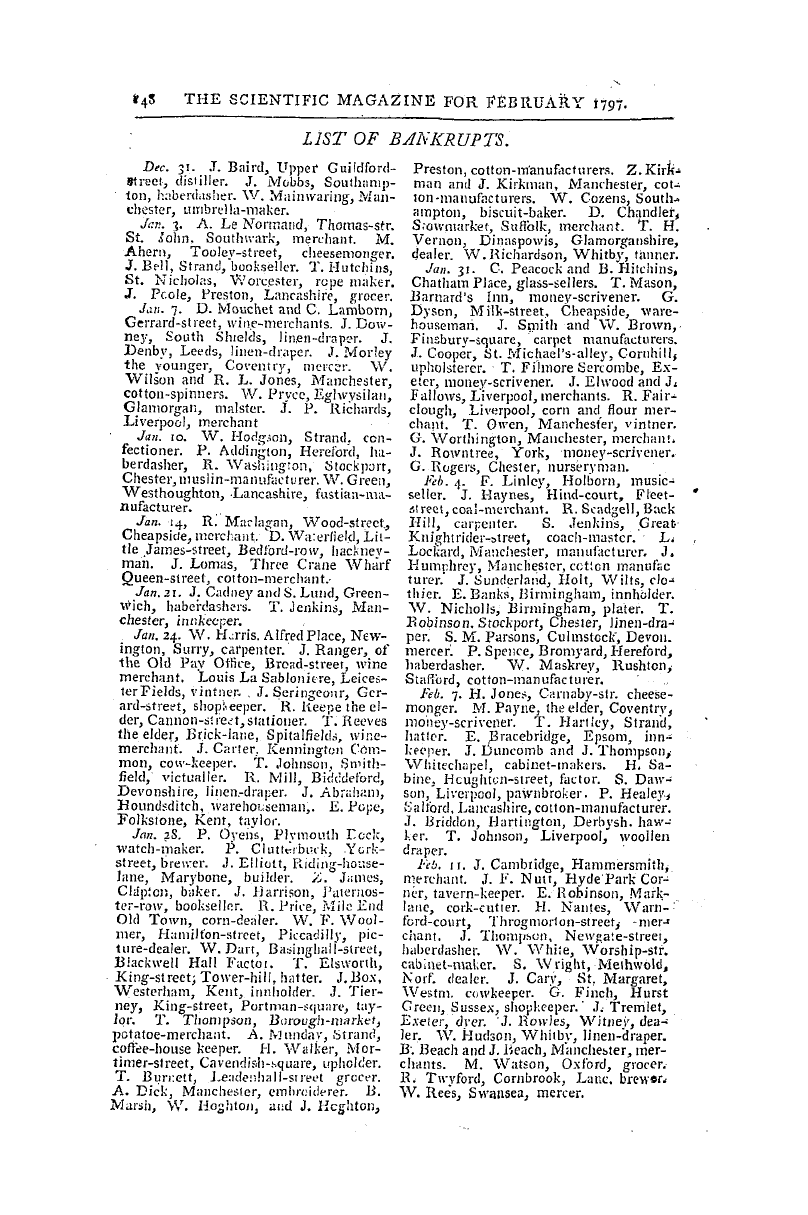Note: This text has been automatically extracted via Optical Character Recognition (OCR) software.
Original Letter From Addison To A Lady.
should I promise more ? Consider , I conjure you , the fatal necessity lam under of removing myself from an intercourse so dangerous , and . in any other commands dispose of your most humble and devoted , J . A .
Description Of An Unfrequented Cave, Near Besancon, In France.
DESCRIPTION OF AN UNFREQUENTED CAVE , NEAR BESANCON , IN FRANCE .
HPHIS cavern has never yet been described by any English traveller . - " - It is about half a league from the Abbey of God ' s Grace , near Besancon , and situated in a very narrow valley . The extent from the entrance to the extremity , which is terminated by a rock , is 3 6 4 feet ; its greatest width is 135 ; and its height about 40 feet . What is most remarkable , is the cold that is felt herein . M . De Cossigny of Besanconwho visited this cavern in the months of August and
, October , in comparing his observations on the different degrees of heat in it , with those of another gentleman who had formerly examined it , says , that his thermometer stood at half a degree below the freezing point , whilst that of the other gentleman , in the same month of August , was nine degrees below it ; he therefore cannot conceive how the above mentioned gentleman could find upon the floorwhich is
, generally an entire sheet of ice , a small quanti ty of rain water which had fallen some days before , and was not then frozen , as he never thought that an inch or two of water upon a vast piece of ice could be so long in freezing . But it was no ways astonishing that he should find , in so mild a season as that when he was there , a little clear water here and there above the ice , on the floor in other parts of the cavern ; and that he
was often incommoded in taking the profile and dimensions of the cavern , by the drops , which fell in abundance upon his paper from different parts of the roof . He also remarks , that he found it much colder in August than in October ; and , that though he was well wrapt up in a thick great coat , and his hands covered with a pair of warm gloves , he was scarcely able to stay long enough , nor was his fingers capable to hold the pento take the dimensions of it ; yet in October
, he staid an hour and an half there , and felt very little cold , though without a great coat . The most remarkable thing he met with in this cavern , was a vein of fine brown clay , which was very soft and moist , and adhered to his fingers like paste , while every thing around it was frozen . Of this clay he took two lumps with him to Besancon , with which he made the following experiments . He put a piece of it
into a still from which he obtained nothing but common water , which made him think it was no more than common earth , divested of its active principle . Some he put in a crucible , and calcined it , which became red , and having afterwards put it in a still it yielded a very clear water ; he next reduced it to powder to make a lye of it , which did not yield the least particle of salt . Lastly , he calcined it a second time in order to make another lye , and had nothing from it but simple water ,
Note: This text has been automatically extracted via Optical Character Recognition (OCR) software.
Original Letter From Addison To A Lady.
should I promise more ? Consider , I conjure you , the fatal necessity lam under of removing myself from an intercourse so dangerous , and . in any other commands dispose of your most humble and devoted , J . A .
Description Of An Unfrequented Cave, Near Besancon, In France.
DESCRIPTION OF AN UNFREQUENTED CAVE , NEAR BESANCON , IN FRANCE .
HPHIS cavern has never yet been described by any English traveller . - " - It is about half a league from the Abbey of God ' s Grace , near Besancon , and situated in a very narrow valley . The extent from the entrance to the extremity , which is terminated by a rock , is 3 6 4 feet ; its greatest width is 135 ; and its height about 40 feet . What is most remarkable , is the cold that is felt herein . M . De Cossigny of Besanconwho visited this cavern in the months of August and
, October , in comparing his observations on the different degrees of heat in it , with those of another gentleman who had formerly examined it , says , that his thermometer stood at half a degree below the freezing point , whilst that of the other gentleman , in the same month of August , was nine degrees below it ; he therefore cannot conceive how the above mentioned gentleman could find upon the floorwhich is
, generally an entire sheet of ice , a small quanti ty of rain water which had fallen some days before , and was not then frozen , as he never thought that an inch or two of water upon a vast piece of ice could be so long in freezing . But it was no ways astonishing that he should find , in so mild a season as that when he was there , a little clear water here and there above the ice , on the floor in other parts of the cavern ; and that he
was often incommoded in taking the profile and dimensions of the cavern , by the drops , which fell in abundance upon his paper from different parts of the roof . He also remarks , that he found it much colder in August than in October ; and , that though he was well wrapt up in a thick great coat , and his hands covered with a pair of warm gloves , he was scarcely able to stay long enough , nor was his fingers capable to hold the pento take the dimensions of it ; yet in October
, he staid an hour and an half there , and felt very little cold , though without a great coat . The most remarkable thing he met with in this cavern , was a vein of fine brown clay , which was very soft and moist , and adhered to his fingers like paste , while every thing around it was frozen . Of this clay he took two lumps with him to Besancon , with which he made the following experiments . He put a piece of it
into a still from which he obtained nothing but common water , which made him think it was no more than common earth , divested of its active principle . Some he put in a crucible , and calcined it , which became red , and having afterwards put it in a still it yielded a very clear water ; he next reduced it to powder to make a lye of it , which did not yield the least particle of salt . Lastly , he calcined it a second time in order to make another lye , and had nothing from it but simple water ,




























































